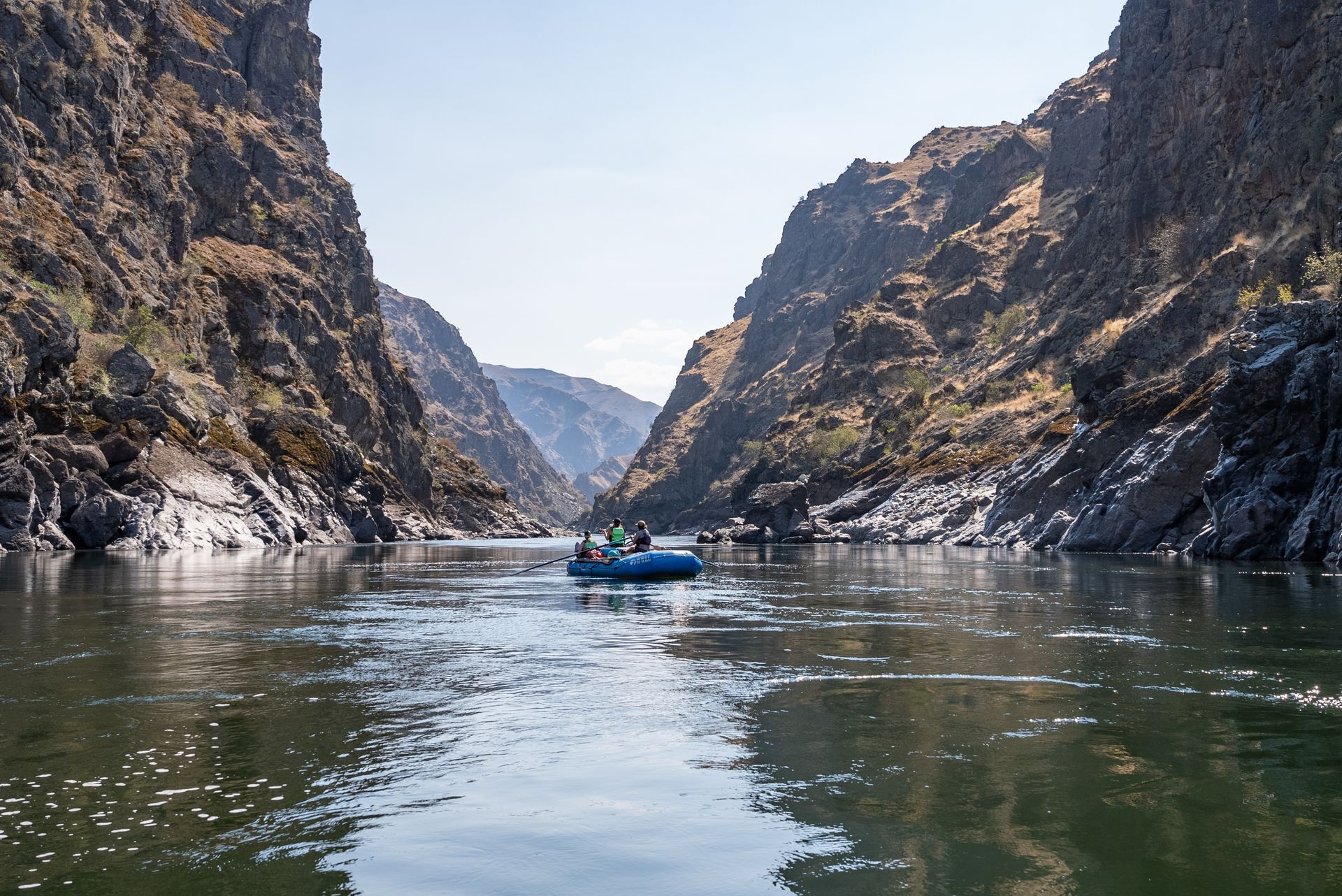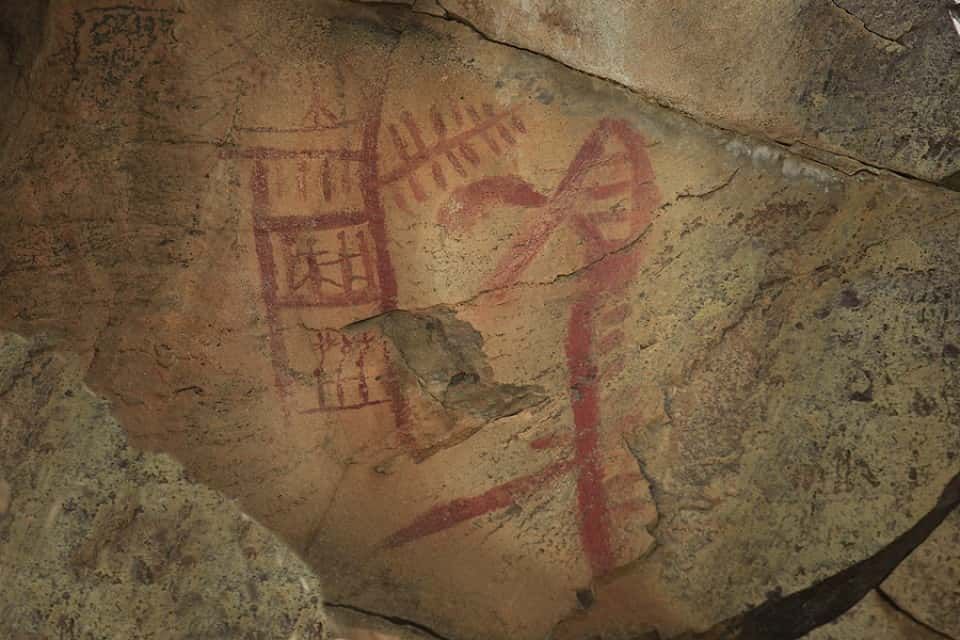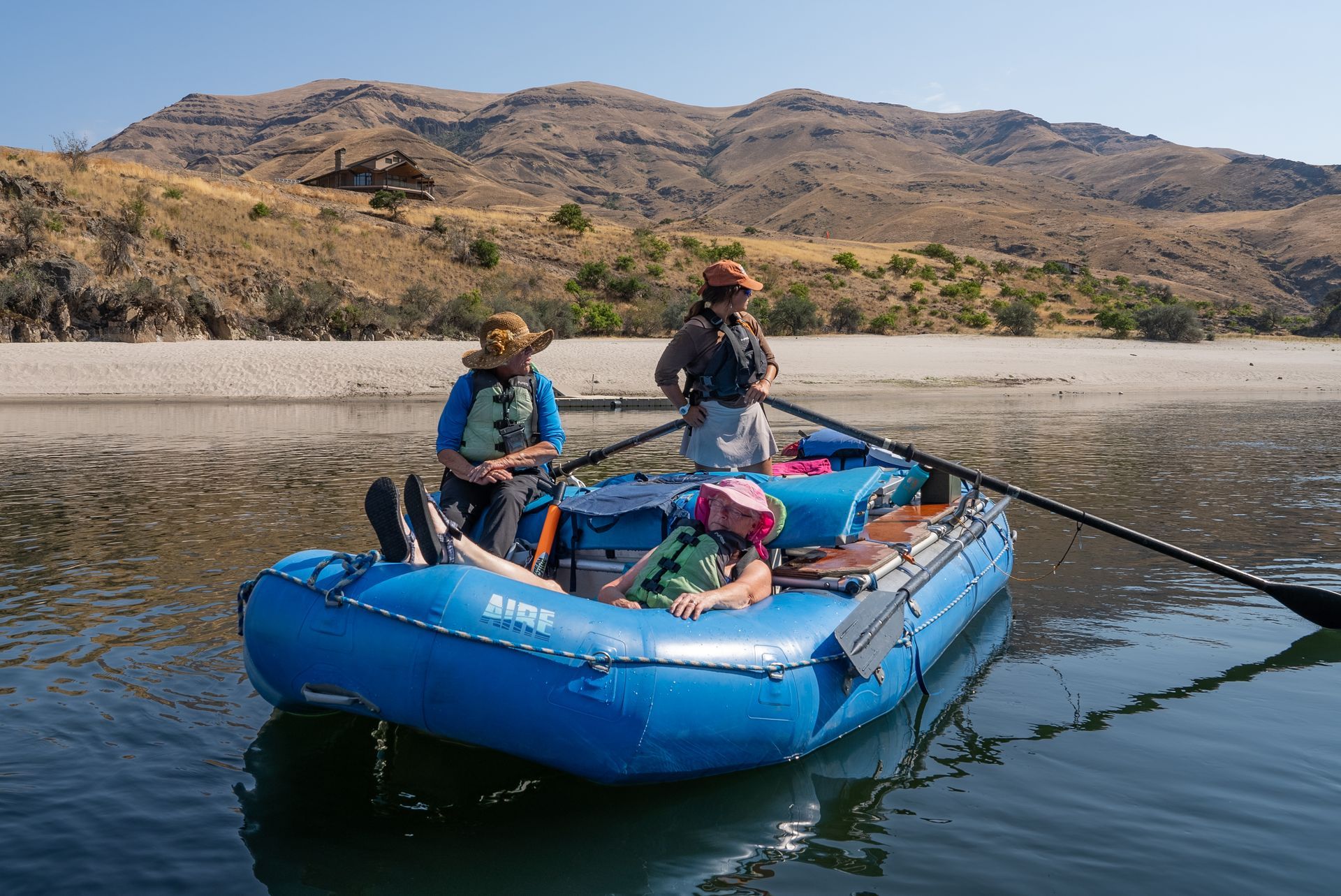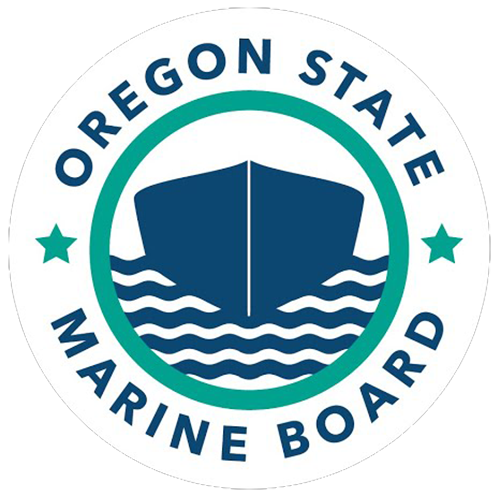The Ultimate Guide to Rafting the Salmon River: What to Expect on Your Adventure
If you're looking for a multi-day rafting trip that combines natural beauty, steady whitewater, and time to disconnect, rafting the Salmon River is a solid choice. Located in a remote part of Idaho, the Salmon River, also called the “River of No Return,” offers clear water, consistent rapids, wide sandy beaches, and a landscape shaped by both natural forces and human history.
Here’s what you can expect on a trip down this stretch of river.

Meet the River: A Remote Stretch of the West
The Salmon River is one of the longest free-flowing rivers in the lower 48 states. It cuts through rugged backcountry and gives rafters a chance to experience a landscape that hasn’t changed much in centuries.
Winding Waters River Expeditions runs trips on the lower 53-mile section of the river, known as the “Canyons” of the Salmon. This stretch includes four distinct canyons: Green, Cougar, Snow Hole, and Blue Canyon. Each one reveals different layers of rock, shoreline terrain, and river features.
The river follows a “pool and drop” pattern, which means calm stretches of water are followed by sections of rapids. These longer pools provide time to paddle, relax, swim, and take in the scenery before the next section of whitewater begins.
Camping on Sand Beaches
A unique part of this trip is the camping experience. The riverbanks are lined with soft, white sand beaches that make ideal spots to stop for the night. These beaches are large, open, and provide space to set up tents, gather for meals, and unwind by the water.
After a day on the river, evenings are spent around camp getting to know your group, enjoying a freshly prepared meal, and watching the sun set over the canyon walls. There’s no need to bring any special gear because your guides handle it all.
Some guests bring a fishing rod to try their luck at catching smallmouth bass in the quieter parts of the river.

Rapids and Calm Water
While there are sections of splashy Class III and IV whitewater, this is not a high-intensity river. The rapids are spaced out and manageable for first-time rafters and experienced paddlers alike. Guides provide instruction and handle most of the steering so you can focus on the experience.
Between rapids, the river slows down and opens up. These quieter sections are great for swimming, spotting wildlife, and simply enjoying the pace of river travel. You’ll move through different types of terrain, from steep canyon walls to wide open valleys.
A Landscape With a Long History
This area has been home to people for thousands of years. Along the riverbanks, you may see rock art created by the Nez Perce and other Indigenous groups. These pictographs are reminders of the deep cultural roots in the region.
Later, in the 1800s, miners and homesteaders tried to settle along the river. Some of their cabins and tools still remain. Lewis and Clark even attempted to travel this stretch in 1805 but quickly turned back due to the terrain. The river earned its current name from the once-abundant Chinook and Sockeye salmon that spawned here each year.

Wildlife Along the River
Spending several days on the Salmon River puts you in a good spot to observe wildlife. You might see Bighorn Sheep climbing high above the water, River Otters playing near the banks, or Bald Eagles perched in the trees. Birdsong is common in the early morning, and deer often wander along the shoreline.
Wildlife sightings vary depending on the season and time of day, but most trips include at least a few memorable encounters with animals in their natural habitat.
A Closer Look at the Geology
The story of the Salmon River begins long before people arrived. Around 300 million years ago, volcanic islands formed in the ocean near where the Aleutian Islands are today. Over time, they collided with the North American continent. This event created what geologists call the Wallowa Terrane, a chunk of crust that now forms part of the Salmon River region.
As you float through the canyons, you’ll pass rock layers that tell the story of ancient mountain-building, erosion, and tectonic shifts. It’s a good place to appreciate how long this landscape has been taking shape.

What to Know Before You Go
Winding Waters Rafting provides fully outfitted trips down the lower Salmon River. You don’t need to have rafting experience. Guides will give you a briefing each day and help with camp setup and meals. All equipment is provided, from boats to dry bags.
The season usually runs from June to September when the weather is warm and the river is running at a good level. These months also provide the best conditions for swimming and sleeping under the stars.
Book Your Trip
Rafting the Salmon River is a chance to slow down, spend time outside, and experience a part of Idaho that’s often overlooked. The combination of clear water, reliable rapids, and quiet beach camps makes it a solid choice for those looking to get off the grid for a few days.
Ready to book your Salmon River rafting trip?
Book now.





